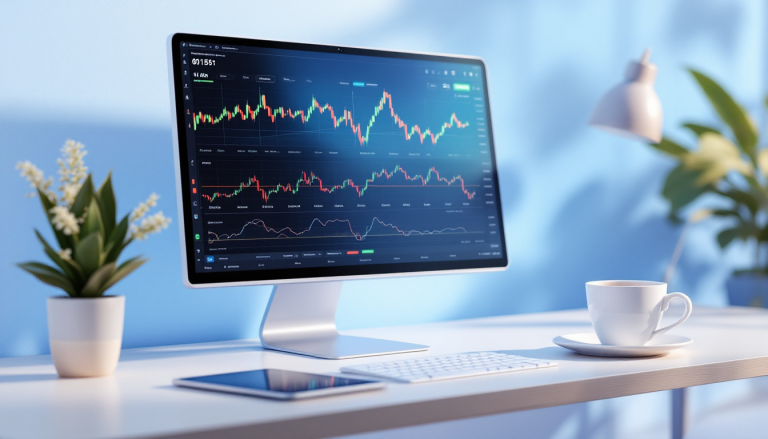How to track cryptocurrency prices

Cryptocurrencies are highly volatile assets whose prices can fluctuate dramatically in a short time. Effectively tracking cryptocurrency prices is essential for all users interested in these digital assets.
Price tracking for cryptocurrencies goes beyond just analyzing current rates; it also involves monitoring market trends, understanding the factors influencing prices, and responding promptly to significant events.
The cryptocurrency market is extremely sensitive to news and developments, including announcements regarding new technological advancements, changes in regulation, partnerships, and cybersecurity breaches. Being timely in tracking such news allows traders to make quick decisions, whether to buy, sell, or hold their assets.
The high volatility of digital assets makes them appealing for traders, but it also heightens risks. Recognizing levels of volatility and analyzing historical data can aid in forecasting future market movements. Platforms like TradingView and other technical analysis tools enable users to explore volatility and identify potential entry or exit opportunities.
For market participants with a diversified portfolio, it’s important not only to keep an eye on prices but also to manage risks effectively. This includes asset diversification, using hedging tools, and setting loss limits. Portfolio management applications, such as Blockfolio and Delta, allow users to monitor their overall portfolio value, price changes, and asset diversification.
Analytical tools, including technical indicators (like moving averages, RSI, and MACD), assist in identifying trends and potential market reversals. These tools can be applied across different time frame charts, benefiting both short-term and long-term investors. Platforms such as TradingView provide access to a wide range of these tools, enabling users to create their own trading strategies.
Psychology plays a critical role in cryptocurrency trading. The market’s volatility and unpredictability can trigger emotional reactions like fear and greed, which may lead to irrational decision-making. Monitoring market sentiment, through social media or sentiment indicators, can help traders better understand market behavior and avoid emotional pitfalls.
As technology advances and the number of market participants increases, the methods for tracking cryptocurrency prices continue to evolve. We can expect the emergence of even more sophisticated analytical tools in the future, including artificial intelligence and machine learning, which will analyze vast amounts of data and predict market trends with greater accuracy.
Additionally, the rise of decentralized finance (DeFi) and non-fungible tokens (NFTs) adds new layers to the analysis of the cryptocurrency market. These new assets and instruments require users to acquire additional knowledge to effectively track their value and dynamics.
In conclusion, the continually changing landscape of the cryptocurrency market presents both opportunities and challenges for traders. By staying informed and utilizing the right tools, traders can navigate the complexities of this market and enhance their potential for success.
Latest news
-

Profitable trading bot
Trading in financial markets is becoming increasingly accessible, and many market participants are striving to automate their processes for greater efficiency. One of the most popular solutions is the use of trading bots—a program that trades on exchanges or activates pre-set algorithms. However, creating and configuring a profitable bot is no easy task. This software […]
-

Own Cryptocurrency Trading Strategy
Trading in market attracts millions of traders worldwide due to its high liquidity, 24/7 operation, and the potential for leveraging capital. However, to trade successfully in this market, one must establish a clear and consistent trading dynamic. Forex trading is a dynamic process that requires flexibility and ongoing market analysis from traders. Once you develop […]
-

Cryptocurrency trading bot
Trading cryptocurrencies is becoming increasingly popular each year. Given the high volatility of cryptocurrency markets and their 24/7 availability, traders are constantly seeking tools that help them trade faster and more efficiently. One such tool is the cryptocurrency trading bot—a program that automates the buying and selling of assets on cryptocurrency exchanges. A cryptocurrency trading […]
-

Trading signals in Telegram
Trading signals are becoming increasingly popular in the toolkit of traders in financial markets, particularly in the cryptocurrency space. Telegram, as one of the leading messaging platforms, has emerged as a primary source for receiving these signals. Trading signals on Telegram are delivered through specialized channels or groups, where users receive alerts about profitable trading […]

